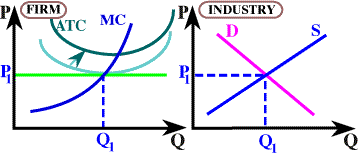
Property taxes are a classic example of a fixed cost. Typically, property taxes are a function of the commercial value of the land and (usually) buildings on the land. They don't rise or fall in the short run as the firms output changes, so they are a fixed cost.
As we know, a change in fixed costs doesn't change output for the firm or industry in the short run. The graph below shows the short run impact of an increase in property taxe or any fixed cost. All that happens in the short run is that total costs increase but since neither price nor marginal cost changes output doesn't change.
